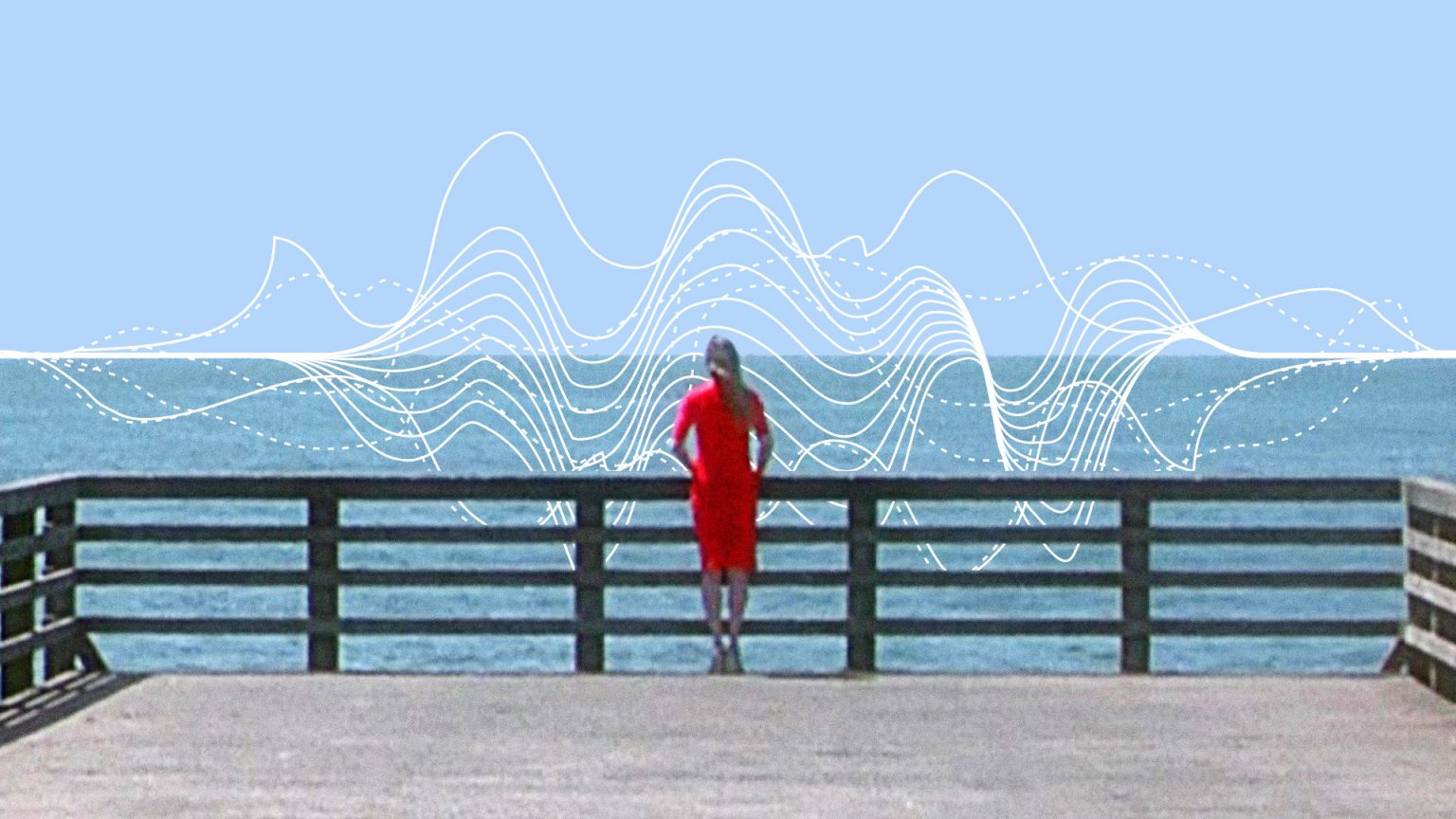Composer Clint Mansell has collaborated with director Darren Aronofsky on all of his feature films (except mother! which has no music) but it is his bravura score for Requiem for a Dream — Aronofsky’s horrifying, psychedelic fantasia about the devastation of drug addiction — that remains his most notorious composition.
Mansell worked with the Kronos Quartet to craft a mesmerizing score with dramatic highs and lows, evocative of the drugs that the film’s characters covet. He deftly captures the hopes, scheming, and hunger of Aronofsky’s doomed protagonists. Much of what makes Mansell’s score so unforgettable is its overwhelming presence. Just like an opera, as the film’s title suggests, Mansell’s score pervades the majority of the film — there is rarely a moment without some form of music. Unlike other scores that blend quietly into the background, Mansell’s arrangements resound gloriously.
In the opening scene, the film’s title card crashes down from the top half of the frame. It is accompanied by a harsh clank that evokes a carnival attraction, strapping us in for a madcap ride. Beneath this effect, the ominous cellos of Mansell’s “Summer Overture” blare, ushering in Harry (Jared Leto) and Tyrone’s (Marlon Wayans) odyssey across a boardwalk to pawn Sara’s (Ellen Burstyn) beloved television for drug money. This opening piece establishes the film’s epic, theatrical tone and foreshadows the characters’ eventual downfall. After this prosperous summer, what was once a recreational pleasure turns into a deadly obsession.
Shades of the famed “Lux Aeterna” theme appear here in the light piano melody while a hip-hop undercurrent adds a sense of skewered whimsy and ruggedness, which matches the film’s gritty Coney Island milieu. Electronic chugging sounds evoke the monotony of their long journey past the ocean and an empty roller coaster. Mansell uses hip-hop and electronica to convey the drug party atmosphere that Aronofsky frames with quick, music video-style montages. Opposing these brisk rhythms are Mansell’s “dream” compositions: Slow, staccato chimes overlaying a languid, tapping sound that conveys the characters’ gradual formulation of a plan to get one step closer to their dream.
Variations of the dark “Lux Aeterna” leitmotif occur during pivotal moments, notably, when Sara sends in her application to appear on a television game show. Through his sinister music, Mansell warns the viewer that the latter will not lead to Sara’s happiness but rather her undoing. “Cleaning Apartment” repeats the theme as a demonic Sara cleans her apartment and fidgets on her couch. Aronofsky manipulates the film’s playback speed to convey Sara’s mania and unrest, but Mansell’s slow and eerie piano is at odds with these frenetic visuals, rendering this sequence all the more unsettling. Thus, Mansell signals that Sara’s addiction to diet pills will worsen, just as her son Harry predicted.
In contrast, Mansell crafts a romantic and ethereal musical theme for Harry and Marion (Jennifer Connelly). The deep, resonant cellos no longer convey terror but dreamy beauty. The soft, chiming piano embodies their tender connection and the scene’s overall tranquility as they gaze into each other’s eyes and light touch. Yet there is a soft melancholy beneath the piece that hints towards their downfall, indicated by the title “Ghosts of Things to Come.” At the film’s end, “Ghosts of a Future Lost” cements the notion that Marion and Harry have squandered a promising relationship.
This repetition of the “Ghost” theme has a more somber and reflective lilt. It plays over Marion’s devastating phone call before she attends a degrading orgy. She pleads with Harry, who is miles away in Florida and sick with a rotten arm, to come and rescue her, but deep down she knows this is a futile request. Mansell mourns for the broken couple who have allowed drug use to define the love they share.
The final two tracks are masterworks of film scoring, accompanying one of the most harrowing sequences in cinema history. “Meltdown” is a jagged clamor of clanging, staccato violins, and grating, machine-like sounds. This strange cacophony of sonic distortions adds a sense of terrifying dread and tension to Aronofsky’s jackrabbit cuts between Marion’s participation in the orgy, Sara’s electroshock therapy, Tyrone’s strenuous labor under a racist jailer, and Harry’s worsening arm. The drums get faster to match the rising speed of Aronofsky’s cuts between these ghastly situations, overwhelming the viewer and escalating their horror.
Mansell’s magnum opus “Lux Aeterna” serves as the finale of Requiem for a Dream, uniting a montage of the main characters, who lie traumatized in their beds. The intense strings and ghostly piano ache with each note, creating an elegy for these damaged figures, whose lives are torn apart — what few dreams they had been completely now vanquished. Mansell creates a score that is just as haunting and unforgettable as Darren Aronofsky’s virtuosic visuals. At once haunting and beautiful, Mansell’s audacious score is a tour de force that perfectly encapsulates this melancholy and melodramatic tale.




